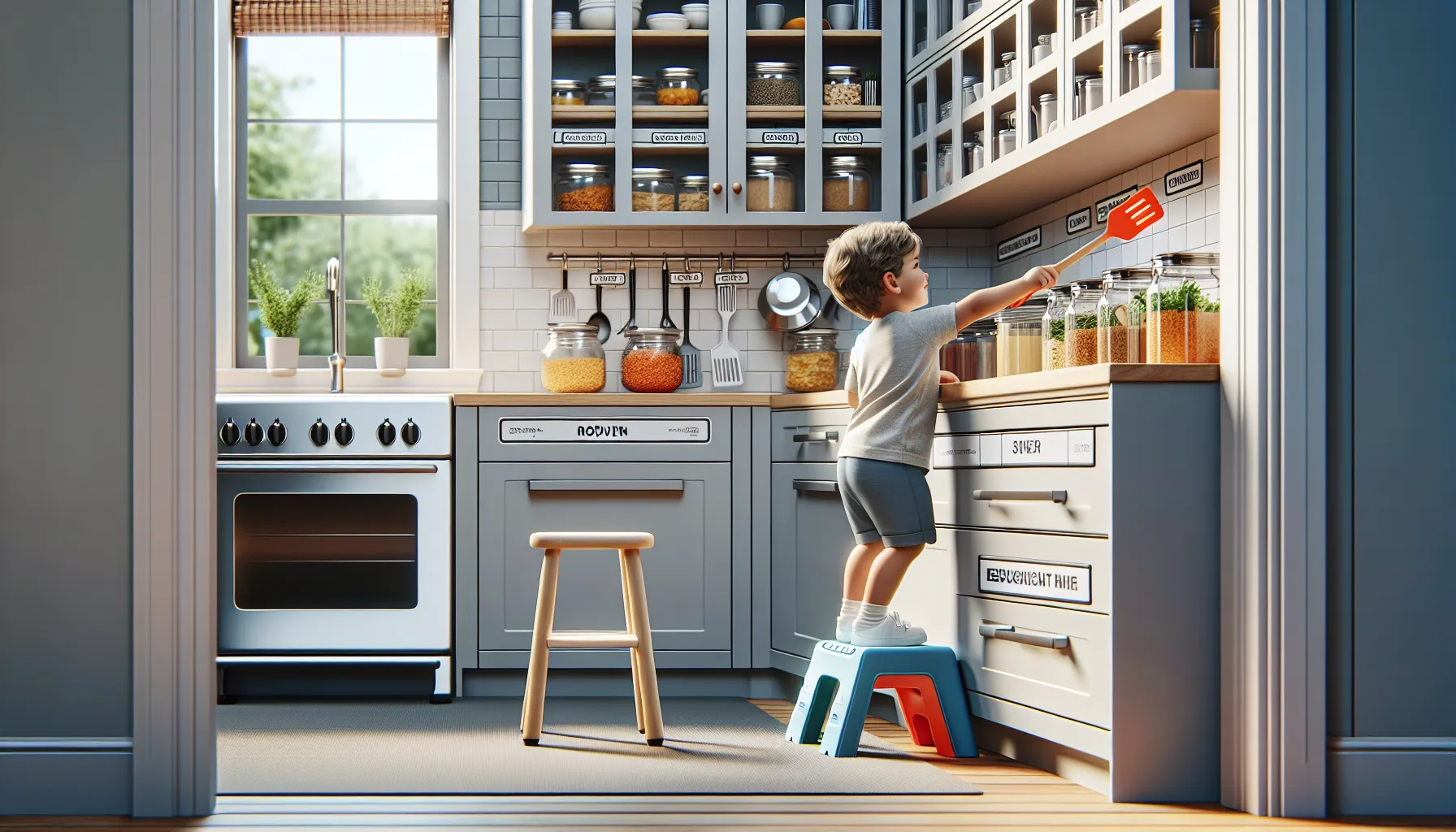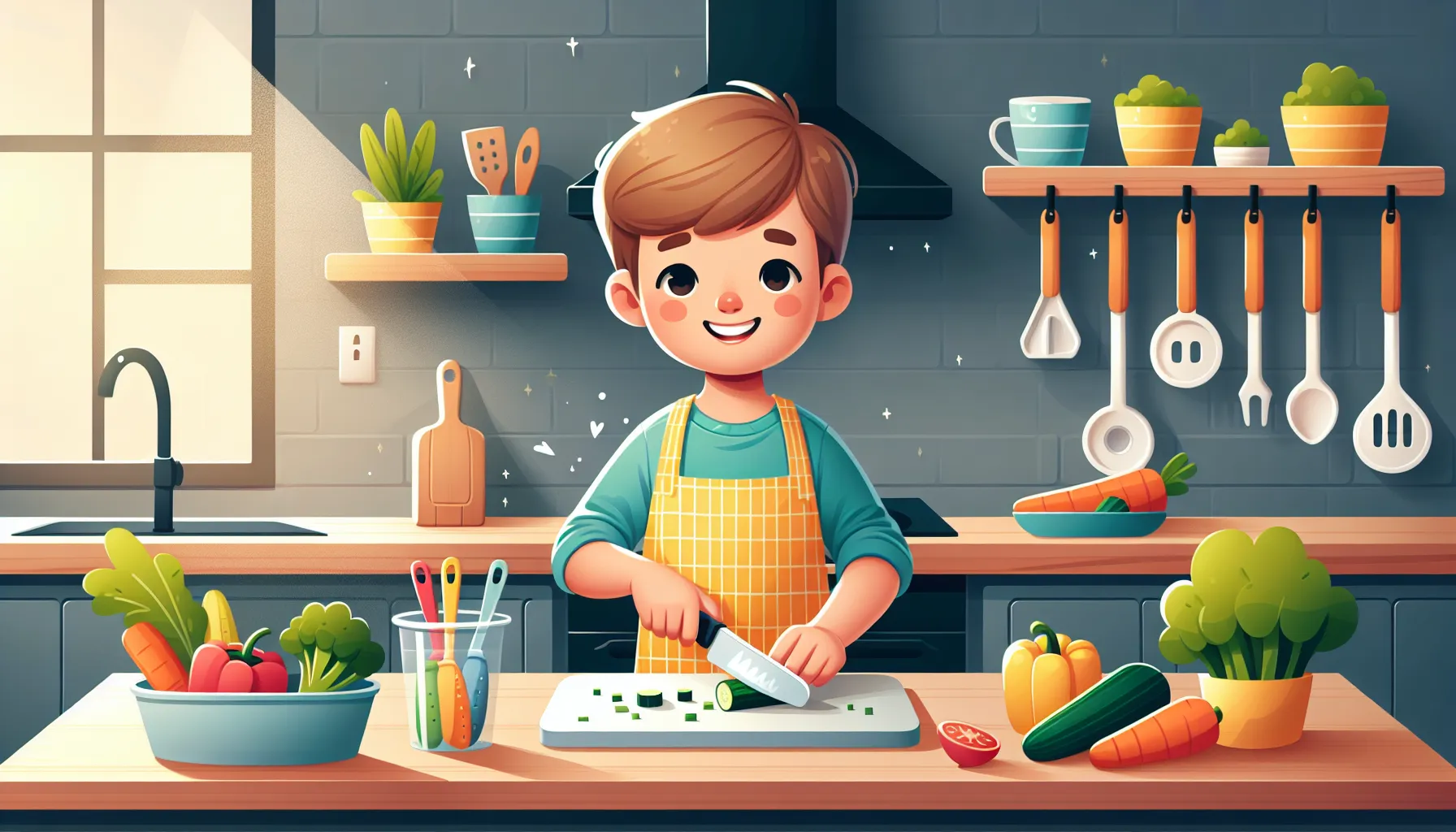
Key Takeaways
- Cooking with children can be both fun and educational, but safety must always be a priority to avoid potential risks.
- Teaching kids important cooking safety habits, such as proper utensil handling and awareness of hot surfaces, builds confidence and ensures a secure environment.
- Organizing the kitchen with child-safe tools and creating a kid-friendly workspace helps minimize hazards and makes tasks manageable for young learners.
- Hygiene practices like thorough handwashing and safe food handling are essential for instilling healthy habits and preventing contamination.
- Assigning age-appropriate cooking tasks, from simple stirring for younger kids to recipe-following for older children, promotes skill development and fosters independence.
- Close supervision and positive guidance are key to helping children learn safely and enjoyably in the kitchen.
Cooking with kids can be a joyful and rewarding experience, but it also comes with its challenges. How do we create a safe environment that allows them to explore, learn, and have fun without unnecessary risks? It’s natural to feel a mix of excitement and caution when introducing children to the kitchen.
By teaching simple safety habits early, we can help them build confidence while keeping potential hazards at bay. From handling tools properly to understanding basic hygiene, there are practical steps we can take to make cooking both safe and enjoyable. After all, the goal is to nurture their curiosity while protecting their well-being.
Let’s explore ways to make the kitchen a place where children can develop skills, share moments with us, and stay safe every step of the way.
Importance Of Teaching Cooking Safety To Children
Teaching children cooking safety builds their confidence while keeping them protected. It helps them develop critical life skills, like handling tools effectively and maintaining cleanliness during food preparation. These lessons create a safer kitchen environment and help children embrace responsibility from a young age.
When kids understand safety rules, they learn to approach cooking with care. For example, they start paying attention to knife handling, heat precautions, and proper storage of ingredients. This awareness reduces the likelihood of accidents, creating a more enjoyable and secure experience for everyone involved.
Cooking safety also nurtures a deeper understanding of cause and effect. How do hot surfaces burn if touched? What happens when raw ingredients are left out? Guiding children through these concepts equips them to recognize potential hazards independently.
Baking and cooking sessions become opportunities to foster patience, precision, and critical thinking. These activities prepare children for future tasks while teaching them to remain alert and cautious in different environments. By making these interactions safe and engaging, we help children form positive habits that benefit them for years to come.
How do you currently teach safety to young cooks in your family? A blend of practical demonstrations and clear guidance can make even complex concepts easier for them to grasp.
Preparing The Kitchen For Safe Cooking

A well-prepared kitchen creates a safe space for children to learn and enjoy cooking. Setting up the area thoughtfully minimizes risks and keeps the experience fun and educational.
Organizing Tools And Equipment
Storing tools in designated locations reduces clutter and accidents. Sharp objects, such as knives and scissors, should stay in locked drawers or high shelves. Use containers or hooks to keep non-hazardous tools like spatulas and measuring cups within easy reach.
Sorting ingredients and equipment helps children find what they need quickly. Keep frequently used items like bowls and spoons in lower cabinets. Clearly labeling jars and containers with simple names or images also supports younger cooks.
Inspecting equipment before use is vital. Ensure mixing appliances, oven mitts, and stovetop protectors are in good condition. Are there any items that could pose a hazard during a cooking session? A quick review prevents unnecessary problems.
Creating A Kid-Friendly Workspace
A workstation at an appropriate height makes tasks manageable and reduces strain. Use sturdy step stools or kid-sized tables for younger children. This setup gives them better control while mixing or decorating.
Choosing a clear, spacious area keeps the workspace efficient and safe. Remove unnecessary items from countertops to avoid spills or accidents. Do children have adequate room to carry out each step without feeling overwhelmed?
Using child-safe tools encourages independence and limits risks. Silicone spatulas, plastic measuring spoons, and cutters with rounded edges help kids work confidently. Reviewing instructions for each step builds their understanding and encourages safe habits.
Essential Cooking Safety Tips For Children

Creating a safe environment in the kitchen helps children gain confidence while they develop important skills. By teaching practical safety habits, we can make cooking enjoyable and risk-free for young learners.
Supervision And Guidance
Close supervision keeps children safe and helps them learn properly. We should stay within arm’s reach whenever they handle kitchen tools, work near heat, or measure ingredients. Clear instructions make tasks less confusing—asking questions like, “What’s the next step?” can encourage them to think critically. Demonstrating each process before they try ensures that they know what to do.
Proper Handling Of Utensils
Teaching children how to hold and use utensils correctly prevents accidents. Start with age-appropriate tools, such as plastic knives or small mixing spoons. Show them the safest way to cut, stir, or mix, like holding knives by the handle and curling fingers inward when chopping. Regularly inspect utensils for loose or broken parts before use.
Awareness Of Hot Surfaces And Appliances
Children should understand the dangers of hot surfaces and how to recognize them. Point out appliances like stoves, ovens, and toasters as off-limits without supervision. Use oven mitts or pot holders when handling hot items and have them practice safe methods, like turning pot handles inward to avoid spills. A simple phrase like, “Always let an adult check if it’s cool enough,” can reinforce this habit effectively.
By focusing on these safety tips, we can make cooking a rewarding experience for children while keeping risks to a minimum.
Teaching Hygiene Practices
Helping children understand the importance of hygiene lays the foundation for safe cooking habits. By introducing simple, effective practices, we can make their time in the kitchen both enjoyable and safe.
Handwashing Techniques
Encouraging proper handwashing is key to maintaining cleanliness in the kitchen. We teach children to wash their hands with soap and water for at least 20 seconds before starting and after touching raw ingredients or unclean surfaces. Singing a short song can help them time this step and make it fun.
We also explain why clean hands matter. Bacteria and dirt can transfer to food, so cleaning hands before cooking keeps everyone healthy. Visual reminders like posters near the sink help reinforce this habit.
Safe Food Handling
Teaching children how to handle food carefully helps prevent contamination. We guide them in keeping raw ingredients, especially meat or eggs, separate from ready-to-eat foods. Using different cutting boards or utensils for raw and cooked items makes this simple to follow.
We remind them to check the cleanliness of surfaces and tools before use. Any spills are cleaned immediately to avoid spreading bacteria. Engaging children in tasks like labeling leftovers with dates can also teach them about proper storage practices.
What hygiene tips have worked well in your kitchen? Asking children these questions sparks meaningful conversations and strengthens their understanding.
Age-Appropriate Cooking Tasks And Activities
Selecting tasks that match a child’s age and abilities helps build confidence and makes learning fun. Cooking together becomes safer when we guide children toward activities suitable for their skill levels. How can we engage kids at every stage to make the experience both secure and enjoyable?
Tasks For Younger Children
Young children thrive with simple, supervised activities that introduce them to basic kitchen tasks. Assigning manageable responsibilities allows them to participate safely while developing motor skills.
- Mixing and Stirring: Provide a sturdy bowl and spoon for stirring pancake batter or mixing dry ingredients for cookies.
- Washing Produce: Encourage them to rinse fruits and vegetables under running water. This introduces healthy habits.
- Measuring Ingredients: Let them scoop or pour pre-measured ingredients into a bowl, teaching them basic math.
- Topping & Sprinkling: Allow them to sprinkle cheese on pizza or decorate cupcakes with sprinkles.
Focusing on these activities ensures young children stay engaged without unnecessary risks.
Tasks For Older Children
Older kids handle more complex tasks once they’ve gained experience and confidence through practice. Introducing challenging activities fosters responsibility and enhances independence.
- Cutting Soft Foods: Use a child-safe knife to chop bananas or strawberries.
- Following Recipes: Guide them step-by-step through simpler recipes like muffins or sandwiches.
- Operating Appliances: Show them how to use basic tools, such as a mixer or toaster, safely.
- Cooking Basics: Teach skills such as cracking eggs or flipping pancakes under close supervision.
How do these activities help your child grow? They promote critical thinking and teach children the importance of working carefully in the kitchen.
Conclusion
Cooking with children is a rewarding way to teach them valuable life skills while creating lasting memories. By prioritizing safety and tailoring tasks to their abilities, we can make the kitchen a place where they feel confident and curious. With the right guidance, children not only learn to cook but also develop habits that serve them well beyond the kitchen. Let’s continue fostering their growth in a safe, supportive environment that inspires creativity and builds essential skills for the future.
Frequently Asked Questions
Why is it important to teach children cooking safety?
Teaching children cooking safety helps them develop critical life skills, including handling tools, maintaining hygiene, and reducing the risk of accidents. It also builds their confidence and prepares them for future responsibilities.
How can I create a safe cooking environment for kids?
Create a kid-friendly kitchen by storing sharp objects out of reach, organizing ingredients clearly, and using child-safe tools. Design workspaces at an appropriate height and keep hazardous areas, like stove tops, supervised.
What are some age-appropriate cooking tasks for children?
Younger children can help with simple tasks like mixing, washing produce, or measuring ingredients. Older children can handle more complex activities like following recipes, cutting soft foods, and using appliances safely.
What are the best tools for kids to use in the kitchen?
Child-safe tools like plastic knives, small spatulas, and kid-sized mixing bowls are ideal. Ensure tools are age-appropriate, easy to handle, and designed for safety to reduce risks during cooking.
How do I teach kids about hygiene in the kitchen?
Encourage kids to wash their hands for at least 20 seconds before cooking and after handling raw foods. Teach them proper food handling techniques, like keeping raw and cooked foods separate, and stress the importance of a clean workspace.
How can I make cooking with kids enjoyable while ensuring safety?
Focus on fun, supervised tasks matched to your child’s abilities. Use clear instructions, demonstrate safety techniques, and celebrate efforts to keep the experience enjoyable while minimizing risks.
What are the most important safety rules for children in the kitchen?
Key rules include handling tools carefully, avoiding hot surfaces, staying within supervised areas, and using appliances only with adult guidance. Always ensure clear communication and practical demonstrations for better understanding.
How can I prevent accidents when children are cooking?
Stay within arm’s reach of children, especially when they handle tools or are near heat sources. Use age-appropriate tools, ensure a clutter-free workspace, and reinforce safety habits through consistent guidance.
At what age can children start cooking independently?
Children can begin basic cooking tasks independently around ages 8–10, depending on their confidence and skill level. However, adult supervision is recommended until they consistently demonstrate safe habits.
Why is cooking with children beneficial?
Cooking with children encourages creativity, builds life skills like patience and responsibility, and fosters family bonding. It’s a fun way to teach practical skills while ensuring shared quality time.

